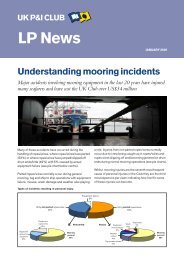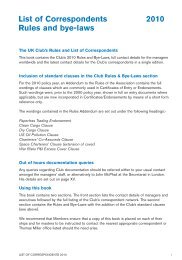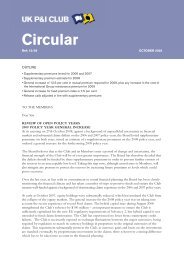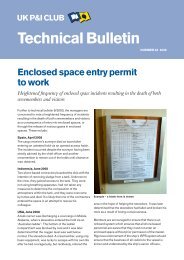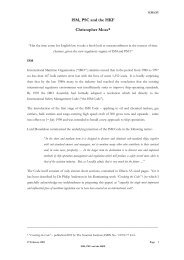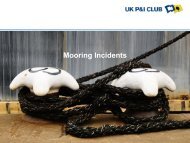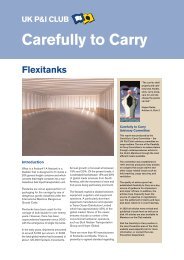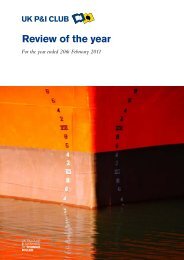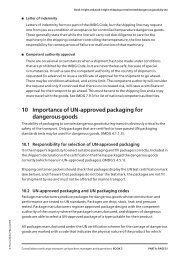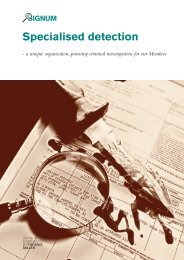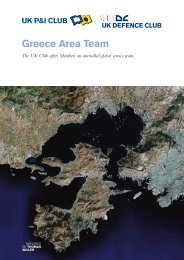Biofuels - UK P&I
Biofuels - UK P&I
Biofuels - UK P&I
You also want an ePaper? Increase the reach of your titles
YUMPU automatically turns print PDFs into web optimized ePapers that Google loves.
standard, ISO 8217:2005, required under point 5.1 of<br />
Section 5 – General Requirements that the fuels to be<br />
classified in accordance with the standard should be<br />
“homogeneous blends of hydrocarbons derived from<br />
petroleum refining.” This was interpreted as precluding<br />
the fuel from containing any bio-derived components.<br />
During the preparation of the fourth edition of the<br />
standard, the working group committee responsible for<br />
the production of the standard considered the topic of<br />
biodiesel and the potential for the material to find its<br />
way into the marine fuel supply chain. It concluded that<br />
it was almost inevitable that as a result of blending<br />
FAME into automotive diesel that some marine<br />
distillates and possibly even marine residual fuels may<br />
contain a proportion of FAME as a result of cross<br />
contamination within the distribution system (Source:<br />
Bunkerworld Forum 03/09/2009).<br />
does not initially appear that there is any potential for<br />
cross contamination to occur. For example, ultra-low<br />
sulphur diesel meeting the EN590 specification may<br />
appear in the shipping documents as ULSD, which<br />
would not immediately indicate that the product<br />
contained any FAME. However, the EN590 diesel<br />
specification allows up to 7% by volume FAME<br />
content. If the ship’s tanks and lines are not completely<br />
stripped of all the ULSD prior to loading a cargo of jet<br />
fuel, the quantity of ULSD containing 7% FAME<br />
needed to render the jet fuel cargo off-specification<br />
would be very small.<br />
Solvent behaviour: An interesting property of FAME<br />
is its ability to act as a solvent, taking up any organic<br />
residue, dirt or scale that may have accumulated on<br />
surfaces of tanks or pipelines. This can have the effect<br />
of cleaning out the dirty storage or pumping systems<br />
but contaminating the FAME itself, and may lead to<br />
subsequent fouling of filters or pump blockages.<br />
As an indication of its solvent strength, researchers<br />
from Iowa State University are investigating how the<br />
solvent properties of FAME can benefit military<br />
applications, by looking into whether or not certain<br />
varieties of waste generated in-situ in battlefield<br />
locations will dissolve into biodiesel, and also if<br />
stationary engines can be run on the biodiesel<br />
containing certain levels of dissolved plastics.<br />
FAME is known to attack and quicken the ageing<br />
process of certain materials, including elastomers<br />
(which may be used as seals, valves, gaskets etc.) –<br />
materials should be checked for compatibility with<br />
FAME and FAME/diesel blends by consultation with the<br />
equipment manufacturer.<br />
Biodiesel in bunkers: On 15 June 2010 the fourth<br />
edition of the marine fuels standard, ISO 8217:2010,<br />
was issued. The previous edition of the marine fuels<br />
As such, the ISO 8217:2010 International Standard<br />
now additionally requires under point 5.4 of Section 5 –<br />
General Requirements<br />
that “The fuel shall be<br />
free from bio-derived<br />
materials other than ‘de<br />
minimis’ levels of FAME<br />
(FAME shall be in<br />
accordance with the<br />
requirements of EN<br />
14214 or ASTM D6751).<br />
In the context of this<br />
International Standard,<br />
‘de minimis’ means an<br />
amount that does not<br />
render the fuel<br />
unacceptable for use in marine applications. The<br />
blending of FAME shall not be allowed.”<br />
Annex A of the ISO 8217:2010 International Standard<br />
considers the issue of bio-derived products and FAMEs<br />
finding their way into marine fuels in more detail.<br />
Annex A states that notwithstanding the fact that FAME<br />
has “good ignition, lubricity properties and perceived<br />
environmental benefits”, there are “potentially specific<br />
complications with respect to storage and handling in a<br />
marine environment”, including:<br />
●<br />
●<br />
●<br />
●<br />
A tendency to oxidation and long term storage issues<br />
Affinity to water and risk of microbial growth<br />
Degraded low-temperature flow properties<br />
FAME material deposition on exposed surfaces,<br />
including filter elements.<br />
It is recognised that there are a number of different<br />
sourced FAME products each with their own particular<br />
characteristics which may impact upon storage,<br />
handling, treatment, engine operations and emissions.




